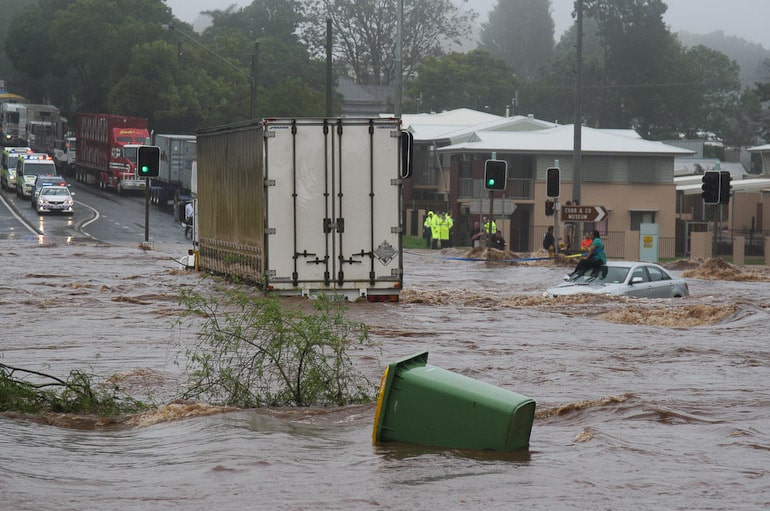Flooding in Australia has been a cause of concern in recent years. On Tuesday, heavy rain in South East Wales sparked rapidly rising water levels, forcing thousands to evacuate and leaving hundreds of homes without power.
—
Heavy rain triggered flash flooding in South East Wales on Wednesday, damaging homes and businesses and forcing thousands of people to evacuate high-risk areas.
In less than 24 hours, some areas received more than a month’s worth of rain, resulting in roads, bridges, and farms across the state being submerged and forcing many to seek shelter on roofs and trees.
Cowra, a city about 166 miles (106 kilometres) west of Sydney, got 121 millimetres of rain in the 24 hours to Monday morning – the highest rainfall in 118 years, according to official data.
Between Monday and Tuesday, the NSW State Emergency Service performed more than 200 flood rescues and received nearly 1,000 requests for help.
“The velocity was extremely fast – too fast in many cases to put boats in the water – hence the evacuations we performed yesterday with the 12 assets we had on hand via helicopter,” State Emergency Service Cief Superintendent Dallas Burnes told Nine’s Today programme.
Flooding in Australia isn’t new. In recent years, the country has been affected by unprecedented rainfall. Scientists associate these extreme events with a weather phenomenon known as La Niña, trade winds that blow across the Pacific Ocean affecting weather systems differently depending where you are in the world.
While La Niña typically brings warmer and drier temperatures to the western and southern US, creating optimal drought conditions, in Australia, the phenomenon is associated with more rainfall and cloudiness. Just a month ago, a third consecutive La Niña weather event sparked severe flooding in Australia. Earlier this year, entire cities and towns across Queensland and New South Wales were submerged following a record-breaking ‘rain bomb’ that experts described as a once-in-a-century event.
Featured image: Wikimedia Commons
You might also like: What’s Behind the Record-Breaking Extreme Weather Events of Summer 2022?


















